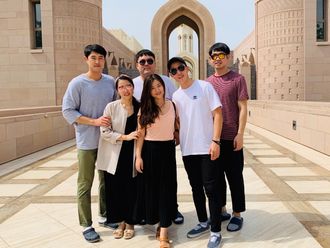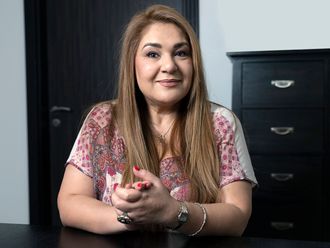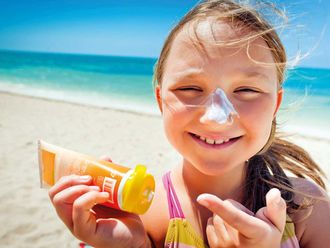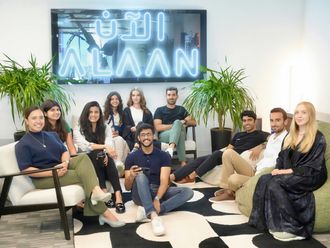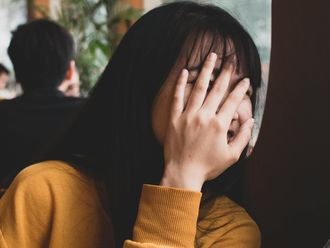Abdullah Khalfan Al Kaabi was among a team of archaeologists who, earlier this year, discovered a 4,000-year-old seal in the ruins of a former trading post on Sir Bani Yas island. Among the finds were bronze tools and complete large jars, made in Bahrain, a first for the UAE. The items were used at a time when the Gulf region was trading with south Asia. The seal refers to Dilmun, the ancient name for Bahrain, and it’s the first time one has been uncovered in the Al Dhafra region of Abu Dhabi. Next up for the archaeologists: researching their finds and presenting their results at an international conference at the British Museum in July. Here, Abdullah uncovers a more recent history – that of how he became an archeologist.
What led you to choose a job that involves digging around in ruins?
Even as I was growing up in Al Ain, I remember I used to love reading and learning about UAE’s history and culture. I also enjoyed being in the company of older people and listening to their stories about the past. So when I completed school and was offered a grant from the government to study archaeology, I gladly accepted and went off to study my passion at the University of Bradford in England, before returning to join Abu Dhabi Tourism & Culture Authority.
Is archaeology as exciting as is seen in Indiana Jones movies?
[Laughs] Good question. Yes, actually it’s very exciting. When you start work at a station, you begin with a [hypothesis]. With time you build a story based on evidence – a story about the site. However, after some time your story may change depending on new evidence you find and you will realise that what you set out with is not the real story; it’s something different. You may get new evidence that will give you a new perspective about the site and its relationship to the surrounding environment.
Where was your first dig or station?
It was in 2011 in Al Ain at a site that dates back to the early Islamic era. I had done a course in archaeology in Georgia in 2008 and had worked at some stations there, but the one in Al Ain was my first experience at an excavation station in the UAE.
What does it take to be an archaeologist?
This is a job that not everybody can get easily interested in or passionate about. Some people may think it is a bit eccentric but that’s because they do not see things from our perspective. If they get to a site and see things from our viewpoint, they will realise how amazing and exciting archaeology can be.
Digging in the sun and the dust – it must be a lot of hard work, right?
I must say it’s not an easy job but what it does is teach you how to be patient. You dig slowly, layer by layer. You may remove maybe 3cm to 5cm of soil at a time. Then you examine the layer. Then remove another layer.
Patience is the key and yes it’s hard work. Plus if you are working in remote areas you have to do two shifts – in the morning and evening because the time you have for the dig may be limited.
What do you find exciting about your job?
The best thing is that it is not a routine job. You don’t do the same things every day and you do not get the same results every day. Every day brings you something new – you may be discovering new things, getting new insights into history, learning more about a people who lived ages ago in the area. It is fascinating.
How come archaeologists seem to find so many bits of broken pottery?
The most common thing that will preserve in the soil is pottery but we do find a lot of things besides. Charcoal, arrowheads, tools, bones of animals, shells... Last month during a dig in Sir Baniyas, we even found some fish hooks made of metal. That said, pottery give you a good evidence for dating a site. It offers strong clues of which period it is from.
Have you ever discovered treasure?
To me, any archaeological find I discover is a piece of treasure because it’s something I’ve achieved due to hard work. Last month for instance, while digging in Sir Baniyas Island we discovered a stamp that dates back over 4,000 years. It was the first one of its kind found in the area and is very special; definitely a treasure. It’s still being studied and compared with similar stamps found in Bahrain and Kuwait.
So what’s your most treasured find and what were your feelings when you discovered it?
I guess it would have to be the stamp seal. It was the first time we found such a seal in this region. We’d found a lot of bits of pottery but finding this was a huge surprise for us. I was totally thrilled; a great moment.
What are the drawbacks of your job?
The fact that you may have to be away from your family for a long time, particularly when working in remote areas. Then there’s the sun and dust but with time you get used to it. We do not have any difficulties as such at work.
How does it to be instrumental in changing history books?
It’s not really changing history books as such. The finds may be adding value to history, giving you a deeper insight, a greater reading into the culture and finding new connections between this region and other areas in the region or world.
Tell us a fascinating piece of history about the UAE that many people might not know.
Many people think that UAE is a new country with a history that is just a few decades old. That’s not true at all. The region that is now the UAE has had strong connections with other countries across the world since very ancient times. This region has been playing a crucial role in the trade and commerce of several countries during various period in history – the Bronze age, the Iron age... It was like a centrepoint, connecting the different worlds. This was a thriving region where lots of people lived. It had rich culture and traditions. Trade has always been a very important element to this region and the interesting thing is even today emirates such as Dubai, Abu Dhabi and Sharjah continue to play a major role in trade and commerce in the region.
Lastly, which is the one place you would like to excavate in?
Egypt, I guess. Because it will be very different from our sites here. There, the culture is different and I’m sure I will find it very interesting to learn more about that.





